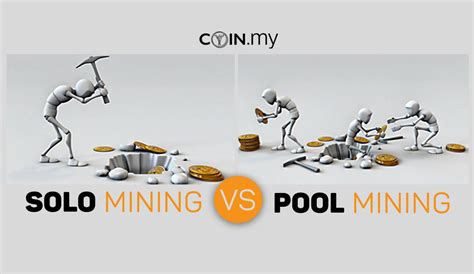Ethereum: The Case for Solo Mining and Beyond
As one of the largest and most well-known cryptocurrencies in existence, Ethereum has sparked a heated debate among miners over its profitability. One question on many minds is whether mining pools can offer better returns than solo mining? In this article, we’ll dive into the potential benefits of pool mining and why some experts argue that it’s not as lucrative as one might think.
What is Mining Pooling?
A mining pool is a collective effort where multiple miners work together to solve complex mathematical problems and validate transactions on the Ethereum network. By pooling their resources, members can increase their chances of solving these problems quickly and efficiently, which leads to faster transaction confirmation times. In return for their contribution, members typically receive a share of the block rewards, which are mined from newly minted Ether (ETH).
The Promise of Pool Mining
proponents argue that mining pools offer several advantages over solo mining:
- Increased Block Rewards: By joining a pool, miners can earn more ETH per block, as they’re sharing their computational power with others.
- Reduced Energy Consumption: Pools often use specialized hardware designed for cryptocurrency mining, which is more energy-efficient than individual rigs.
- Improved Performance: With multiple miners working together, the network’s overall processing power increases, allowing for faster transaction confirmation times and higher block speeds.
- Less Dependence on Electricity Costs: Pool miners don’t rely solely on electricity to operate, as they can also use alternative energy sources or even manual labor.
The Reality of Mining Pooling
However, there are several reasons why mining pool profitability might not live up to the hype:
- Hash Rate Competition: With more miners competing for resources and attention from the network, hash rates can fluctuate wildly, reducing the potential reward per block.
- Increased Difficulty Levels: As the network’s difficulty level increases, it becomes harder for pools to stay competitive, leading to reduced earnings per block.
- Security Risks: Pools are not immune to security threats; compromised pool nodes or malicious miners can drain resources and compromise the network.
Solo Mining: A More Demanding Approach
While mining pool rewards may be lower than solo mining, some argue that solo miners have a more challenging time competing for resources:
- Higher Energy Consumption: Individual miners require significant amounts of energy to power their rigs, which can lead to higher electricity costs and environmental concerns.
- Greater Investment
: Mining solo requires a substantial upfront investment in hardware, software, and maintenance, making it less appealing to those with limited financial means.
Conclusion

While mining pool rewards may be lower than those earned through solo mining, some experts argue that the potential benefits outweigh the drawbacks. Pool miners can still optimize their hash rates and choose the most energy-efficient equipment, which should help them stay competitive in a rapidly changing market.
As Ethereum continues to evolve and improve its scalability solutions, it’s likely that both pool mining and solo mining will remain viable options for miners. The key is finding the best approach for your individual circumstances and financial goals.
Ultimately, the choice between pool mining and solo mining depends on your understanding of the crypto market, network congestion, and energy costs. As always, do your own research and consider multiple factors before making a decision.